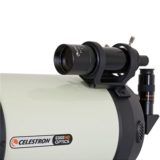

Over the next six months, the telescope performed a series of complex deployment operations, including the unfurling of its huge sunshield. The telescope finally launched on Christmas Day 2021 at 12.20pm GMT (7.20am EST). However, the testing period from 2016 onwards also suffered from long delays, and a further delay was imparted by the global pandemic of 2020. It was originally planned to be launched in 2007, but a major redesign, escalating costs and delays led to it being pushed back to around 2018. Space projects often take longer than expected, but JWST has been more unlucky than most.

This is because light from distant objects is stretched out by the expansion of our Universe - an effect known as redshift - pushing the light out of the visible range and into infrared. With its ability to view the Universe in longer wavelength infrared light, JWST will be capable of seeing some of the most distant galaxies in our Universe, certainly with more ease than than the visible/ultraviolet light view of Hubble. With JWST's larger mirror, it will be able to see almost the whole way back to the beginning of the Universe, around 13.7 billion years ago. This is because of the time it takes light to travel from the object to us. The further away an object is, the further back in time we are looking. It will also be in a place where the gravity of the Sun and Earth work together, making it easier to keep the satellite in place. It keeps the telescope far from the reflected radiation of the Earth, one of many choices designed to keep this highly sensitive telescope cool.

It is being placed in such a remote place for several reasons. At 1.5 million kilometres away, far further than any human has ever travelled, if something goes wrong it won't be possible to head into space and fix it. Hubble famously had a small flaw in its mirror upon launch that required a mission into space to fix. However, being in space makes fixing things that go wrong considerably more difficult. They are also unaffected by the weather, which can be a big problem for astronomers. By being above the atmosphere they don't have to peer through the shifting air to see into deep space, granting them a clearer view than most ground-based telescopes can achieve. Space-based telescopes have a huge advantage over ground-based ones. This point is around 1.5 million kilometres further away from the Sun than the Earth is Instead it will sit at the Earth-Sun L2 Lagrange point. The Hubble Space Telescope orbits around the Earth at an altitude of ~570km What are the distances between the telescopes and Earth? This is why images taken using telescopes which detect infrared frequencies can pick out objects beyond these clouds, and appear clearer than those taken using other telescopes. Infrared light has a longer wavelength and can pass through objects in space that visible light is blocked by, such as gas and dust. However, there are many other forms of light we cannot see, both inside and outside our atmosphere. Our eyes have evolved to detect the band of the spectrum which is known as ‘visible light’, which is unsurprising given that our atmosphere blocks out many of the other wavelengths. Light travels in a range of frequencies along the electromagnetic spectrum. This means it won’t be able to see in ultraviolet light like Hubble, but will be able to focus on infrared bright objects like extremely distant galaxies

JWST has been designed to focus on the infrared part of the spectrum from 0.6 (red light) to 28 microns (infrared). Instead it focuses its unique ultraviolet (0.1 to 0.4 micron) capabilities on work that cannot be done from the ground and its visible (0.4 to 0.8 micron) light instruments on producing the high resolution images we are most familiar with Its instruments can observe a small portion of the infrared spectrum from 0.8 to 2.5 microns, but not to the extent that James Webb can. Hubble’s main focus is on visible and ultraviolet light. What type of light do the telescopes see? Hubble


 0 kommentar(er)
0 kommentar(er)
